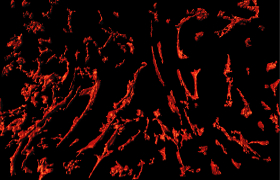Semaphorin 3A and 3F: new tools to normalize the tumor vasculature and to halt metastasis formation - CONCLUDED
Aree / Gruppi di ricerca
Partecipanti al progetto
- Giraudo Enrico (Coordinatore/trice)
Descrizione del progetto

Membri:
Federica Maione (I.R.C.C. di Candiolo, Torino)
Donatella Regano (I.R.C.C. di Candiolo, Torino)
Yaqi Qiu (I.R.C.C. di Candiolo, Torino)
Members of other units:
Prof. Doug Hanahan (ISREC and EPFL, Lausanne, Switzerland)
Dr. Oriol Casanovas (Catalan Institute of Oncology, ICO, Barcelona, Spain)
Dr. Sara Zanivan (Beatson Institute, Glasgow University, UK)
Partners:
ISREC and EPFL, Lausanne, Switzerland
Catalan Institute of Oncology, ICO, Barcelona, Spain
Beatson Institute, Glasgow University, UK
Sponsors:
AIRC - Associazione Italiana per la Ricerca sul Cancro
FPRC - Fondazione Piemontese per la Ricerca sul Cancro
Description:
Objectives:
Study of the effects of Sema3A and Sema3F super-agonists mutants as new compounds to overcome the evasive resistance to the anti-angiogenic therapies, to halt metastasis formation and to normalize tumor vessels.
This project will be developed as described below:
- Synthesis and production of recombinant forms of Sema3A and 3F, resistant to proteases cleavage and with high affinity for Plexins receptors to perform pre-clinical treatments in mouse models of cancer;
- Treatment with the recombinant forms of Sema3A and Sema3F of transgenic mouse models of pancreatic (RIP-Tag2) and cervical (HPV16/E2) tumorigenesis, of orthotopic mouse models of pancreatic ductal adenocarcinoma (PDAC) and breast tumor (4T1), and of xenograft mouse models of human PDAC and colon-rectal carcinogenesis (HPAF-II and HCT-116);
- Analysis of the effects of Sema3A and Sema3F on tumor growth and metastasis formation, on the tumor vasculature (tumor perfusion, permeability and pericyte coverage), on tumor hypoxia and on the expression and activations of pathways regulating the epithelial-mesenchymal transition (EMT),
- Study of the effects of Sema3A and Sema3F on the tumor microenvironment cells, by FACS-sorting inflammatory cells (bone-marrow-derived cells BMDCs, macrophages), endothelial cells and pericytes from cancers treated with Sema3s and by analyzing the differential expression of genes and microRNAs compared to controls;
- Proteomic and phosphoproteomic analysis of tumors treated with Sema3A and Sema3F compared to controls to assess the different intracellular signalling pathways modulated by Sema3s that regulate tumor vessel normalization.
Techniques:
- Animal models: transgenic mouse model of spontaneous pancreatic (RipTag2), cervical (K14-HPV16/E2) and skin (K14-HPV16) carcinogenesis; orthotopic mouse models of pancreatic ductal adenocarcinoma (PDAC) and of breast tumor (4T1); xenograft mouse models of human PDAC and colon-rectal carcinogenesis (HPAF-II and HCT-116);
- Techniques: In vivo gene delivery using adeno-associated virus (AAV) and retrovirus
- confocal microscope analysis and video-lapse microscopy for in vivo imaging
- In vivo imaging using luciferase, fluorescence and IVIS technology.
Facilities (present at IRCC, at Candiolo, TO)
- The Genomic Facility equipped with Agilent Bioanalyzer (Agilent Technologies), HTP-realtime PCR station (Applera 7900 HT) and DNA microarray platform (Illumina Beadstation), DNA Microarrays Illumina platform.
- The Cell Separation facility is equipped with MoFlo cell sorter and two FACS analyzers.
- The Animal Facility may host up to 7500 mice, transgenic and nude mice, and includes a BSL3 Lab and a breed section.
Keywords:
Tumor Angiogenesis, Tumor vessel normalization, Metastasis, Macrophages, Bone-marrow derived cells (BMDCs), Transgenic tumor mouse models, Mouse models of spontanenous tumorigenesis, Anti-angiogenic therapy, Resistance to anti-angiogenic therapy, enzymatic activity, Tumor microenvironment, Tumor invasiveness, Semaphorins, microRNAs




